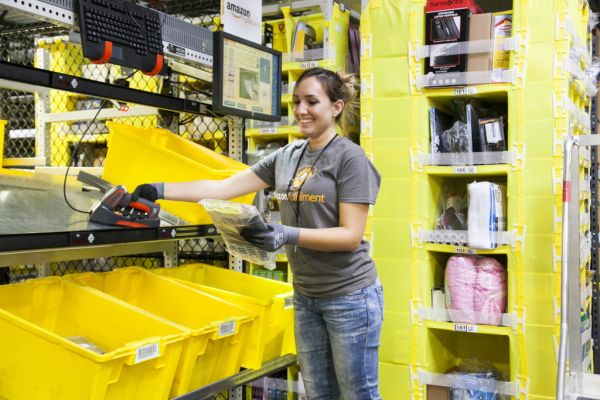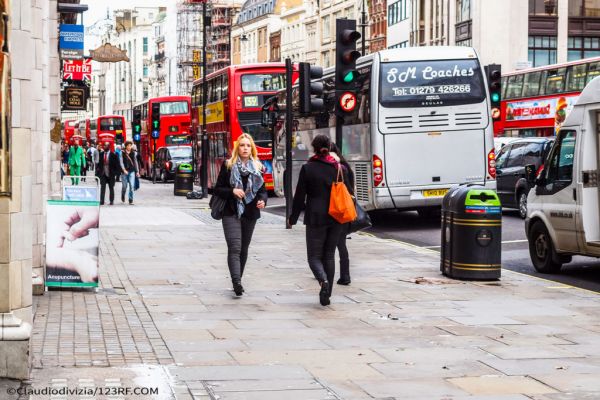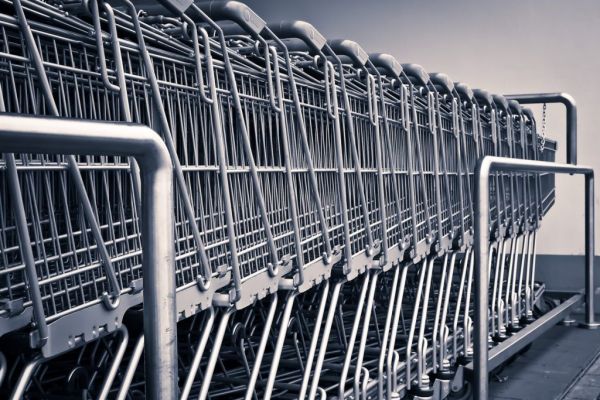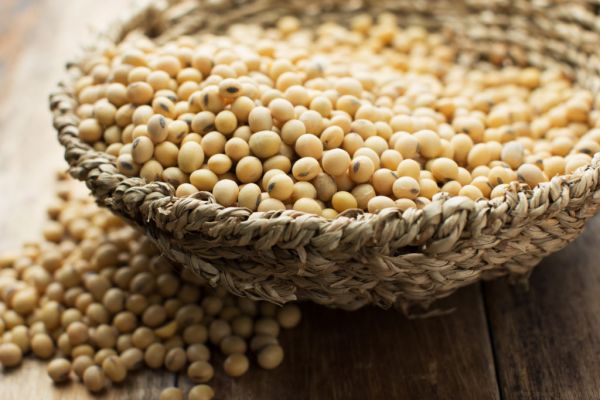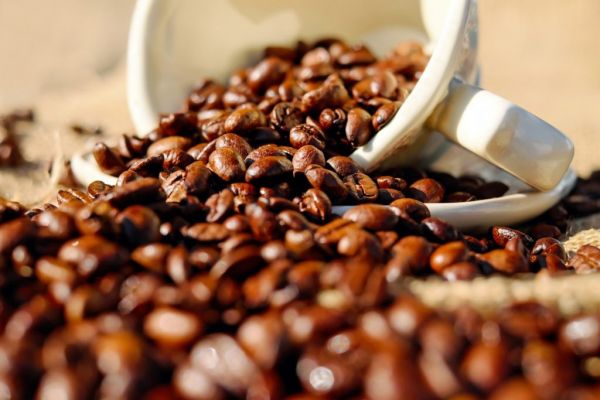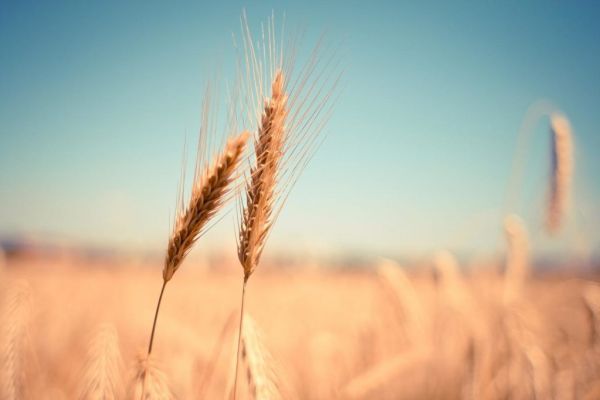It's time for traditional grocers to get their act together.
Amazon has made clear it's coming for your neighborhood grocer. And based on the e-commerce giant's track record of putting competitors out of business (ahem, Borders, Circuit City), traditional grocery stores had better hurry up and improve their online offerings, or prepare to meet their makers.
At least supermarket chains have two advantage booksellers and electronics stores didn't. First, they have a head start: They're well aware of Amazon's category-killing threat by now. Second, they have customer loyalty. Many of the book and electronics stores annihilated by Amazon were national chains people visited occasionally, while grocers are embedded in neighborhoods and visited on a daily or weekly basis by people who need food to survive.
It has been easy for supermarkets to be complacent about the chances of Web clicks subbing for the weekly shopping trip. Americans go online for just 4 per cent of the $795 billion of food and beverages sold each year, according to estimates from research firm Cowen & Co. Unfortunately, there aren't hard numbers on this; other estimates suggest online's share of grocery shopping is as low as 2 per cent. By way of comparison, about 7.5 per cent of total US retail sales were online in the last quarter of 2015, according to the US Census Bureau.
But typically the migration from brick-and-mortar to Internet shopping happens slowly, then all at once. Habits are already changing. One in five US households surveyed late last year by consulting firm Brick Meets Click had bought groceries online at least once in the prior month. Younger people are even more likely to food-shop on the Web – half of people aged 25 to 34 in a recent Cowen survey said they bought or were likely to buy groceries online.
And Amazon already rules food and beverage shopping online, with 22 per cent market share, Cowen estimates.
Traditional supermarkets have taken a few general approaches to meet the budding interest in online grocery shopping. Some outsource online sales entirely. Some let shoppers buy online and pick up in stores. Some run a straight-up online delivery service. And some have tried a mix of all three. The approach that comes closest to the Amazon approach – the delivery service – is hard and expensive. But it is becoming an essential tool for warding off the Amazon threat.
Costco, Whole Foods and others have handed much of their online business over to delivery startups such as Instacart. Many U.S. food sellers are no doubt haunted by the ghost of Webvan, the grocery pioneer that burned through more than $1 billion before shutting its doors in 2001. But outsourcing such chores also ignores the dangerous history of letting tech companies handle key operations. Target still hasn't recovered from letting Amazon operate its website starting in the early 2000s.
Other grocers have mixed-and-matched the benefits of physical stores and online delivery. Walmart has had some success letting customers order groceries online and pick them up in stores. Kroger launched a similar service, called ClickList; but early reviews complain of some of the same problems shoppers find at brick-and-mortar stores, such as coveted items being out of stock.
While letting customers pick up Web-purchased goods in stores is a sensible approach, it's not sufficient. The time has come for traditional grocers to also get good at delivery.
There is reason to hope such an expensive education will pay off in the long run. Customers who shop online are often higher-spending customers, according to Rich Tarrant, CEO of MyWebGrocer, which helps 140 grocers with delivery and tracks data from 55 million shopper loyalty cards.
"Amazon will never take the whole grocery market, but they'll take the top 10 percent of the most profitable customers, and few retailers can afford to lose the top 10 percent," Tarrant said in an interview.
The average online shopping basket is $157 – more than three times what is spent on an average store trip, according to Tarrant's research. That's because, typically, after a shopper orders groceries online, the next time they shop on that site, their grocery baskets are already pre-populated with their previous purchases. It's easier for customers to just hit the reorder button than to cherry-pick daily price specials or comparison-shop at other stores.
Online shoppers also tend to buy a wider variety of items in one session, like bags of pet food they might previously have bought at a specialty pet store, or trash bags they would have stocked up on at Costco. The most popular time for ordering groceries online tends to be in the morning, when shoppers can be more relaxed and willing to try new things, as opposed to when they're darting into a store after work, Tarrant said.
Make no mistake, online delivery does come with hefty costs. It requires employees to pick out, pack and deliver food, which is less profitable than just letting shoppers do much of that work themselves at a physical store.
On the surface, sinking a lot of money into something that's expensive doesn't make a lot of sense when the old model of shopping in stores works just fine for most people. Many traditional food retailers so far haven't been willing to stomach Amazon-sized (read: meager to non-existent) profits.
But these retailers have to look at how other categories, such as books and electronics, have mostly migrated online and ask themselves whether absorbing ballooning costs now is worse than facing extinction later.
In the UK, British supermarkets such as Tesco, Walmart's UK unit Asda, and online grocer Ocado aggressively embraced the growing demand for online shopping. That helped change consumer habits in the UK, where government statistics show 5 per cent of grocery shopping is done online. About 10 per cent of Tesco's grocery sales in the UK come from the Internet.
It's still unclear how profitable online sales are for these companies, or whether their success will translate abroad. While Ocado's revenue is growing faster than most traditional grocers, it's struggling to expand outside of the UK But that could simply be a result of not enough grocers getting behind the effort.
For an example of what the future might hold for grocers who do embrace delivery, you might look to Peapod, the online grocery arm of Dutch grocer Royal Ahold (which runs US chains Stop & Shop and Giant Food). It's not profitable overall, a representative told Gadfly, but it is Ebitda positive in markets such as Chicago and Washington, D.C., where it has operated for years.
Peapod also offers customers the option to order online and pick up items in more than 200 of Ahold's stores. But the company said less than 10 per cent of total sales happen this way; when given the choice, most people prefer delivery.
Peapod has its own food warehouses and delivery trucks, but it combines forces with Ahold to jointly buy some merchandise, such as Tide detergent, for which bigger buyers get lower prices. Still, Peapod faces supply constraints and hasn't been able to add warehouses, trucks, and drivers fast enough to meet growing customer demand.
The transition to delivery service will obviously be challenging, and may not suit every grocer. But for many, the alternative will be much worse.
This column does not necessarily reflect the opinion of Bloomberg LP and its owners.
News by Bloomberg, edited by ESM. To subscribe to ESM: The European Supermarket Magazine, click here.
